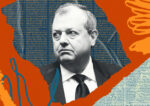Trending
Slight thaw doesn’t unlock markets
In the past few days, banks have begun lending to one another once again, according to key indicators, signifying a thaw in credit markets that have been frozen for weeks.
But despite those promising signs, a deep chill still seems to be pervading the commercial real estate sector.
The inability to line up financing has scuttled some major building and lease sales in the past few months, according to brokers, developers and lenders. One is 17 State Street, a curve-faced, 41-story glass tower in the Financial District.
On the market for the past 10 months, the 570,000-square-foot office building had been listed for $450 million, but with no takers owner RFR Realty decided to de-list it, a broker said. RFR didn’t return a call for comment.
In another deal that has been aborted, real estate giant Tishman Speyer has backed out of purchasing the lease at 150 East 42nd Street from Japanese company Hiro Real Estate, according to the New York Post, in a deal valued up to $400 million.
Hiro is currently paying $22 million a year in rent for the 1.5-million-square-foot office tower, also known as the Mobil Building, and has 75 years left on its lease, the Post reported.
Not only are many building buys and lease purchases stalled, but ground-up projects are basically dead in the water because there’s too much risk involved in filling empty offices, said Paul Talbot, a principal at commercial real estate firm Newmark Knight Frank.
Landlords are likely to have better luck refinancing existing loans, Talbot said. Indeed, in the past few days, he said, a Midtown property owner managed to secure $20 million for a Class A tower in a deal with a 30 percent loan-to-value ratio.
Helping the case of the building, located near Park Avenue, is that it’s almost fully leased, with a 98 percent occupancy rate, Talbot added.
While bank taps may not be open for mega-deals, there is financing available for those in the $5 million to $30 million range, whether for purchasing or refinancing.
“That’s the sweet spot,” Talbot said.
He’s also heartened by what appears to be renewed confidence among top financial institutions, vis-à-vis the London Interbank Offered Rate, or LIBOR, which is what banks charge each other for loans.
Today, the industry-standard rate, which is compiled by the British Bankers’ Association, fell for the eighth straight day, to 3.54 percent. Still, that figure is not close to its mid-September pre-crisis level of 2.6 percent, which is a worrying sign, Talbot said.
Even with smaller deals, buyers will be expected to contribute vastly more of their own equity, said Jack Guttman, a Manhattan-based developer of storage facilities and offices.
Two years ago, lenders could be counted on to kick in 90 percent of the financing for a deal, but now that number is 60 percent, at best, he said. And that 60 percent backing today may likely be split among three lenders, in a “club deal,” Guttman said. “It’s grim. I’ve never seen a shutdown in lending like now.”
Some major banks — most obviously Lehman Brothers — that were heavily invested in real estate deals have vanished. Further making capital scarce is that other institutions now prefer to invest in commercial paper — basically, bank debt, now backed by the federal government — instead of properties, brokers said.
But regional banks may have untapped reserves, because they weren’t as exposed to subprime loans. They also didn’t slice and dice mortgages to the degree that large banks did, said Marty Kravet, president of Royal Abstract, a Manhattan-based title-insurance company that insures mortgages. His company has seen a 50 percent drop in commercial loans in a year.
Still, any deals with regional banks couldn’t top $20 million and would require pro-forma statements guaranteeing that rents would be robust, he said.
“There is such uncertainty in all sectors,” Kravet said, “so you have no idea what rents will be.”




